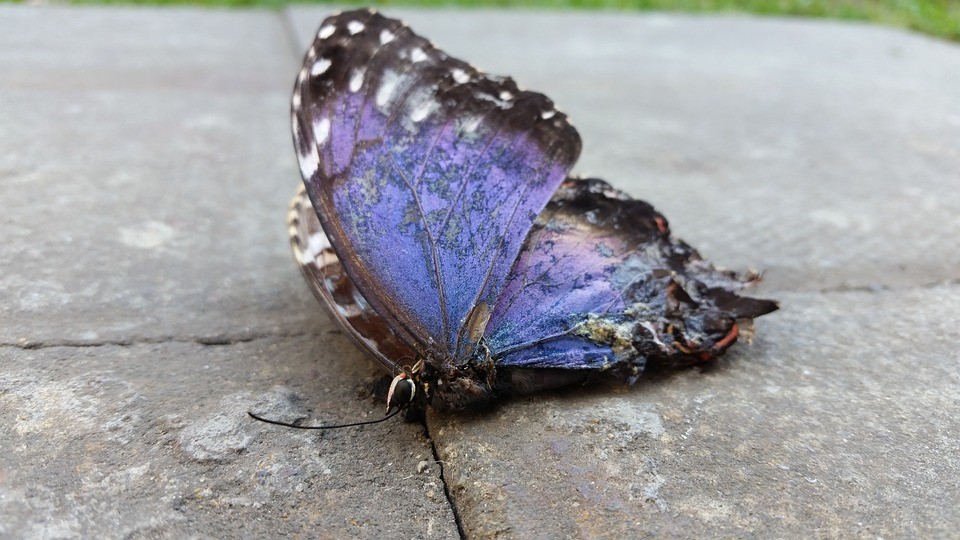27
Jun
Scientists Say, “We know enough to act now,” on Perilous Global Insect Decline
 (Beyond Pesticides, June 27, 2019) A review of scientific literature urges for swift societal action on the collapse of insect populations worldwide, according to authors of a study. The authors point out that while there is a need for more research on the extent of the phenomenon as well as causal factors, there is currently sufficient evidence to spur and inform transformational policy in response to a definite worldwide crisis. The paper, Declines in insect abundance and diversity: We know enough to act now, provides a run-down of actions to take—from national policy to apartment balconies.
(Beyond Pesticides, June 27, 2019) A review of scientific literature urges for swift societal action on the collapse of insect populations worldwide, according to authors of a study. The authors point out that while there is a need for more research on the extent of the phenomenon as well as causal factors, there is currently sufficient evidence to spur and inform transformational policy in response to a definite worldwide crisis. The paper, Declines in insect abundance and diversity: We know enough to act now, provides a run-down of actions to take—from national policy to apartment balconies.
Recent reports name alarming drops in insect diversity and abundance, prompting the ominous label of “insect apocalypse.” Almost half of all insect species are rapidly declining, and a third are being threatened with extinction. The authors state, “Although there has been some criticism of specific studies, the overall trend is clear and the broad geographic reach is perhaps the most dire feature of the current crisis, as assessments from all continents except Antarctica reveal declines.”
The main culprits of insect demise are habitat loss and degradation, pesticides, and climate change. The authors note that it is less critical, at this juncture, to focus on the complexities of the individual issues than to understand that many factors act as a “firing squad” of stressors. “In many cases it will be difficult to identify the killing shot,” the authors write, “but we know the bullets are flying and we know where they are coming from.”
If the loss of insects—and all the critical services they provide—is to be avoided, “society must take steps at all levels to protect, restore, and enhance habitat for these animals across all landscapes, from wildlands to farmlands to urban cores.” The review calls for broad pesticide reform, including a ban on cosmetic lawn pesticides. The authors reiterate the need for improved management of connected habitats to maximize biodiversity at all levels. As aquatic insects have been noted as most vulnerable, protecting and restoring aquatic habitat is noted as perhaps a more urgent focus. More specific policy recommendations include:
- Nations, states, provinces, and cities
- Strengthen pesticide regulations and ban cosmetic use.
- Retail companies should have clear labels to warn about the impact on nontarget insects.
- Sub-national policy to protect insects should be pushed before national or international agreements are achieved.
- Strong incentives to protect, enhance, and restore habitat.
- Proper funding for conservation and management of land.
- Begin conservation efforts before species are on the brink of extinction.
- Mitigate and sequester carbon emissions; promote clean energy.
- Increase habitat connectivity.
- Working (agricultural) lands
- Incorporate conservation of beneficial insect biodiversity.
- Move away from monocultures toward a mosaic of low water use, climate friendly crops that both provide nutrition and nectar resources to local pollinators/beneficial insects.
- Change from conventional, chemical intensive agriculture to ecological intensification, regenerative farming, and agroecology.
- Reduce the use of insecticides, herbicides, and fungicides. Use integrated pest management (IPM).
- Farmers should be rewarded, supported, and encouraged to make changes.
- Higher diversity of hardy, pest-resilient plant species in manufactured foods.
- Natural Areas
- Managers of natural areas, parks, roadsides and rights of way should include conservation of native insect diversity as a goal.
- Incorporate science/experts into management by working with university researchers, nonprofits, and community scientists.
- Maximize native floral resources and practices that maximize benefits to insect diversity.
- Consider the impact of management on insects while planning.
- Connect habitats
- Gardens, homes, and other private property
- “Even small patches of habitat are important” – small areas in urban/suburban yard and parks, including parking strips, can be managed to benefit insects and allow for movement of species across landscapes.
- Eliminate or minimize pesticide use.
- Purchasing food grown using organic or sustainable methods helps foster change in the agricultural sector.
- Advocate to encourage government bodies to protect and restore parks, natural areas, and local waterbodies.
Beyond Pesticides believes that “reducing” the use of toxic pesticides is a middle ground move that is inadequate to the crises we face. The success of organic agriculture proves that these chemicals are unnecessary to food production. Organic lawn and landscape management can create verdant green space on par with any chemical-intensive property.
There is still time to change our trajectory. More than ever, individuals must connect with their local, state, and federal elected officials and demand changes that protect pollinators and other insect populations. As evidenced by Connecticut and Maryland, and dozens of local pollinator protection policies, concerted efforts by grassroots advocates can create lasting positive change.
For more information on how to get active in you state or community, visit Beyond Pesticides’ Bee Protective web page or give the office a call at 202-543-5450.
All unattributed positions and opinions in this piece are those of Beyond Pesticides.










